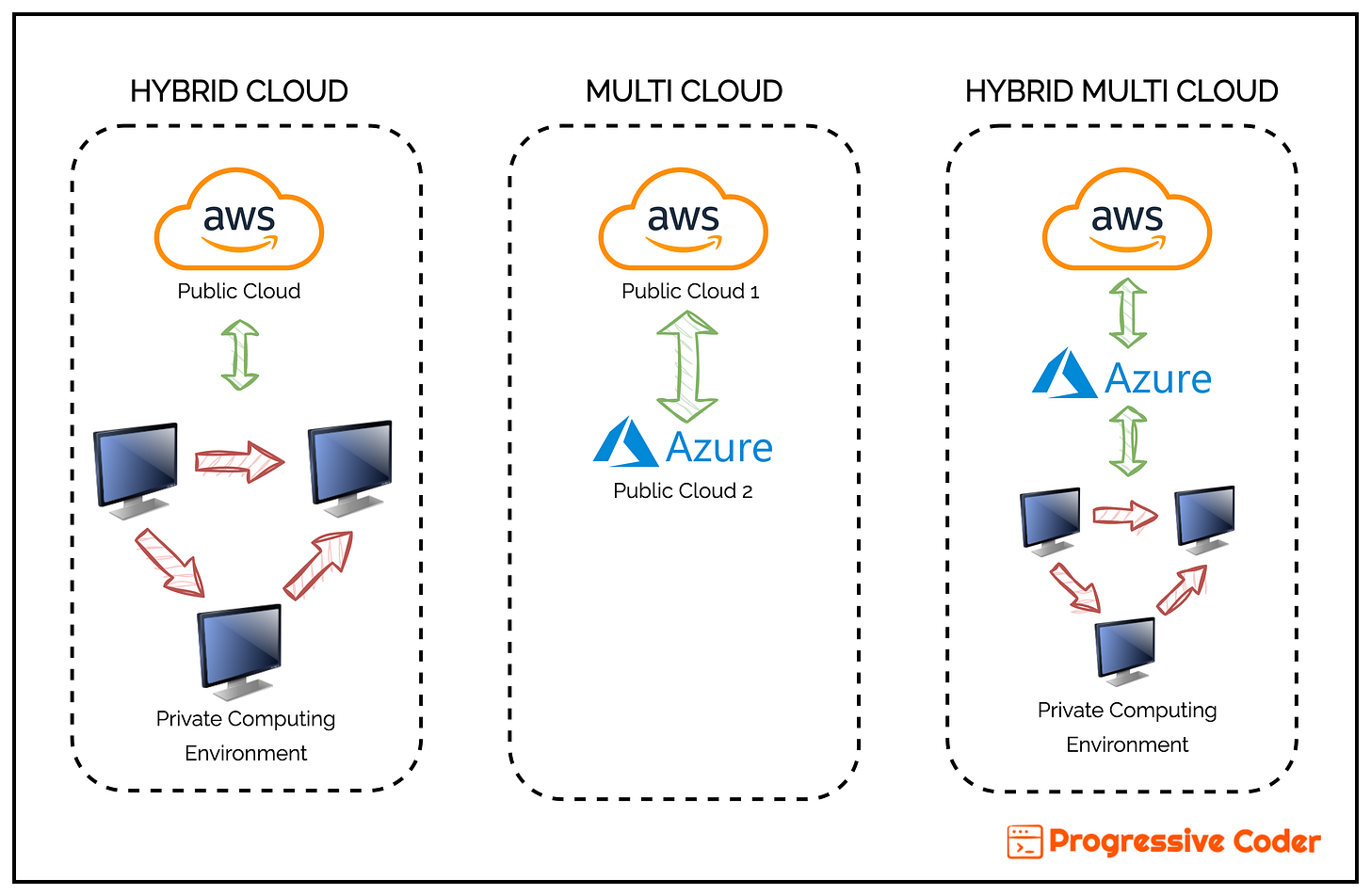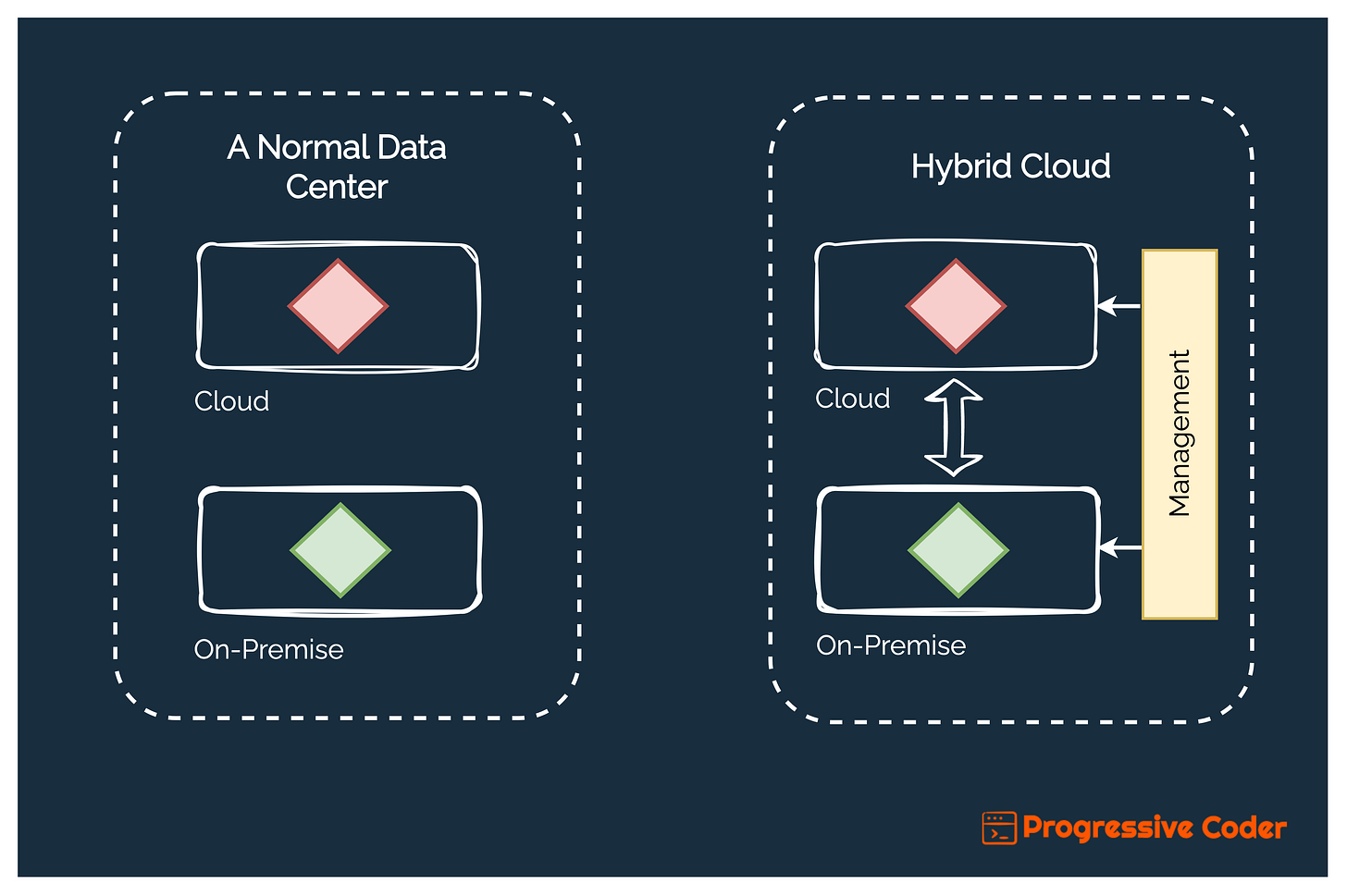Cloud & Backend EP 1 - Multi-Cloud vs Hybrid Cloud
They are more than buzzwords!
Hello and welcome to a new edition of the Progressive Coder newsletter.
The topic for today - Multi-Cloud vs Hybrid Cloud
I already spoke about the importance of hybrid and multi-cloud in an earlier post. Today, we will be taking a better look at what these terms actually mean.
What are Multi-Cloud and Hybrid Cloud?
Often, these two terms are used together. But in truth, a hybrid cloud is a reality for organizations whereas multi-cloud is more like an option that one can choose.
But what do these terms really mean?
Hybrid typically means splitting workloads across the public cloud and on-premise. These workloads generally belong to the same application and therefore, interact with each to perform something meaningful.
Multi means running workloads with more than one cloud provider.
Now, here’s the thing:
Some people consider on-premise solutions to be a part of multi-cloud. This essentially means that a multi-cloud setup might also contain private on-premise computing environments.
A better term to describe this setup could be Hybrid Multi-Cloud. This is quite similar to what Walmart has done with their Triplet cloud model.
The below illustration describes what the three terms look like in practice.
In practice, established organizations rarely start off with a multi-cloud setup from the beginning. The journey begins from a hybrid cloud that might evolve into a hybrid multi-cloud. This is because no company can suddenly move all their workloads to the cloud. Even if that’s the plan, it takes time to reach there.
Hybrid as a buzzword
Too many times, organizations claim they are into hybrid cloud computing when they are actually just using it as a buzzword.
Typically, these organizations have some workloads in the cloud while some workloads are on-premise. There’s no connection or coherence between the two workloads.
This is not a hybrid cloud. These are two isolated environments that are only increasing the complexity of the software situation.
To call something hybrid, there should be some sort of unified management across the two environments. Basically, the two systems should work together seamlessly.
In other words, the hybrid cloud splits workloads across cloud and on-premise environments. However, these workloads should interact with each other to perform some useful tasks. Also, they should have some sort of unified management.
Of course, unified management is not easy. But it is essential to abstract the underlying hybrid cloud platform so that application teams and developers don’t need to worry about differences in various cloud platforms and on-premise infrastructure.
Why Multi-Cloud and Hybrid Cloud?
Here are a few important reasons that drive the adoption of multi-cloud and hybrid-cloud solutions:
No vendor lock-ins with multi-cloud.
A hybrid cloud becomes a must in the case of regulatory and compliance aspects of data security and ownership.
Mitigating risk and disaster management with multi-cloud setup. In other words, not-keeping-all-your-eggs-in-one-basket.
Cost and performance optimization with something like a hybrid multi-cloud strategy.
👉 Time for your views on this matter:
What do you think about the role of Hybrid and Multi-Cloud in the overall cloud landscape?
Are you already using them or planning to use them in the future?



